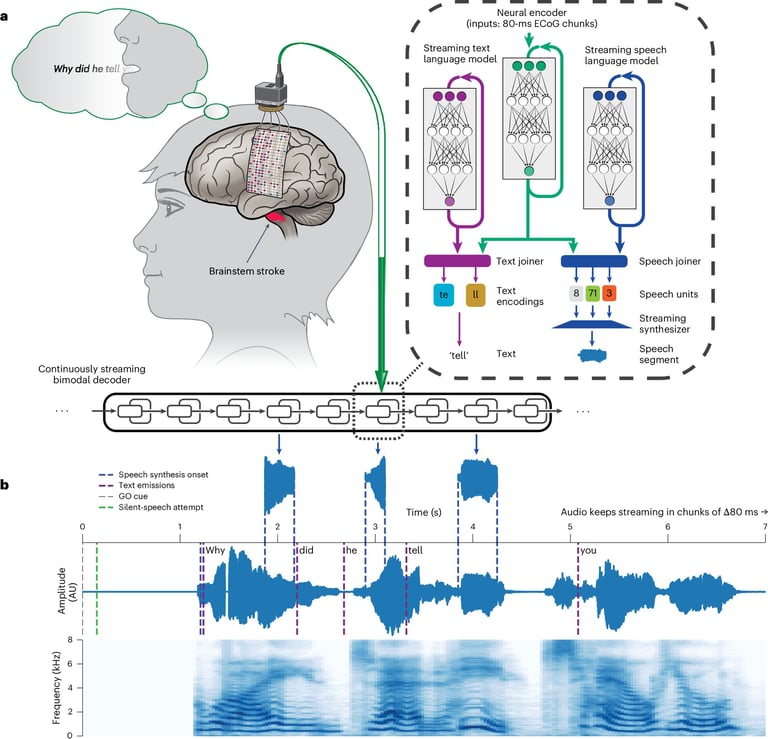Brain-to-Voice AI Streaming
Brain-to-voice AI streaming technology represents a significant advancement in the field of brain-computer interfaces (BCIs)
AAC
4/4/20252 min read


The brain-to-voice AI streaming technology represents a significant advancement in the field of brain-computer interfaces (BCIs), enabling individuals with severe paralysis to communicate using their thoughts. This innovative system decodes neural signals from the motor cortex, which is responsible for speech production, and translates these signals into audible speech in near real-time.
Mechanism of Operation
Neural Signal Acquisition: The system utilizes electrodes implanted on the surface of the brain to capture neural activity associated with speech production. This involves monitoring the electrical signals generated when a person attempts to speak, even if they cannot physically vocalize.
AI Decoding: The captured neural data is processed using advanced artificial intelligence algorithms. These algorithms decode the brain signals into text and subsequently synthesize this text into speech. The decoding process occurs in small time increments (as fast as 80 milliseconds), allowing for rapid translation of thought into spoken words.
Personalized Voice Synthesis: To enhance the naturalness of the synthesized speech, the system incorporates a text-to-speech model that uses recordings of the user’s voice prior to their injury. This personalization helps create a more authentic auditory experience for both the user and their listeners.
Key Features
Near Real-Time Output: Unlike previous systems that experienced significant latency (up to 8 seconds), this new technology can produce audible output within approximately one second after detecting an intent to speak12. This rapid response is crucial for maintaining fluid conversation and reducing feelings of isolation among users.
Continuous Speech Generation: The system allows for continuous speech generation rather than waiting for complete sentences before producing sound. This capability mirrors natural conversational dynamics where speakers often pause or interject during dialogue3.
Flexibility Across Devices: The technology has been shown to work effectively with various types of brain-sensing devices, including high-density electrode arrays and non-invasive sensors like surface electromyography (sEMG) that measure muscle activity4.
Clinical Application
The first successful application of this technology involved a participant named Ann, who suffered from severe paralysis due to a stroke. Through extensive training involving silent speech attempts, researchers were able to map her neural activity to specific phrases she intended to say5. The results demonstrated not only improved speed but also accuracy in decoding her thoughts into intelligible speech.
Future Directions
Researchers are optimistic about further advancements in this field, aiming to enhance expressivity in synthesized speech by incorporating variations in tone, pitch, and loudness that reflect emotional states during communication6. Continued improvements could lead to broader applications for individuals with various forms of speech impairment.
In summary, the brain-to-voice AI streaming technology offers a groundbreaking solution for restoring communication abilities in individuals with severe paralysis by translating thought directly into natural-sounding speech almost instantaneously.
Sources


